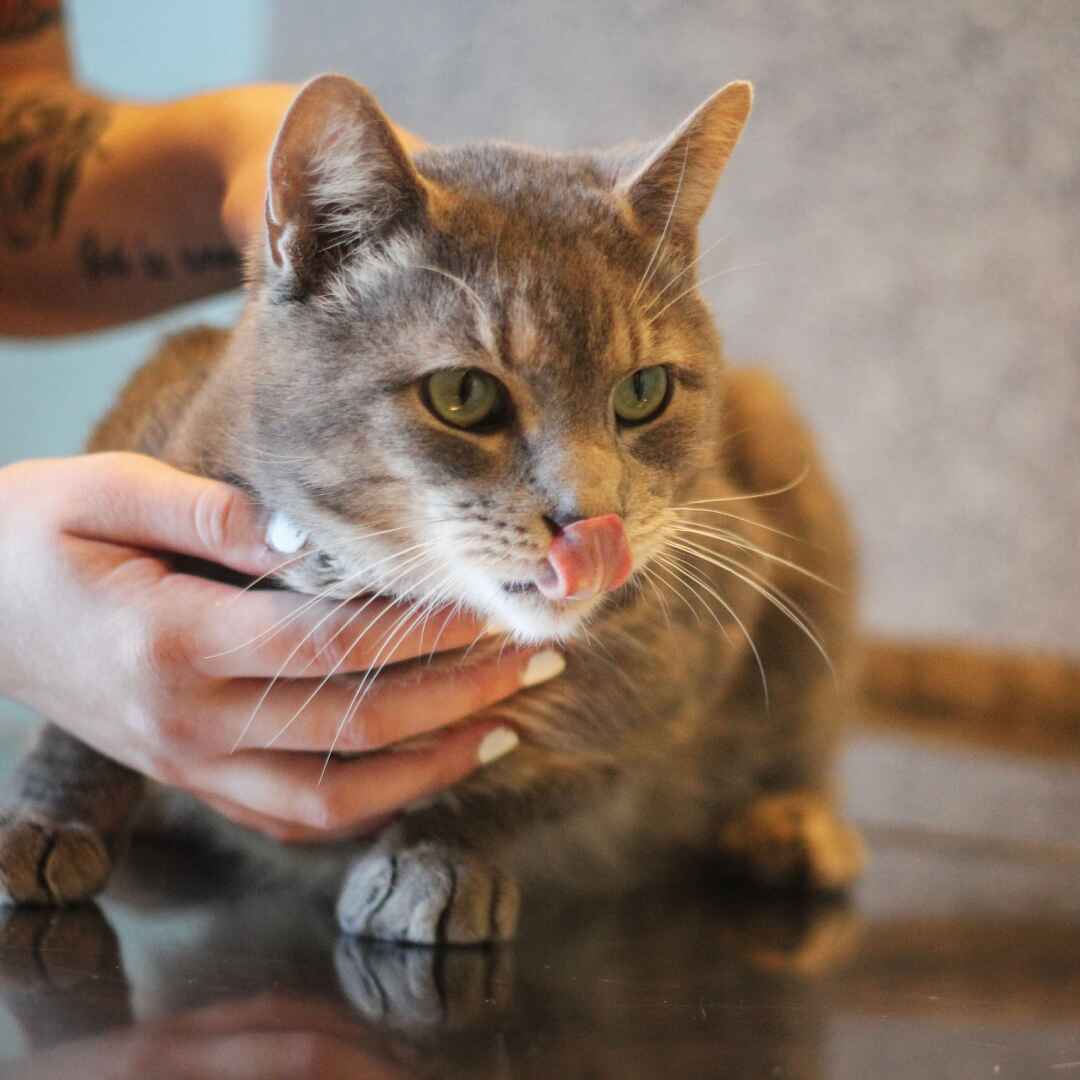Pet Information
Helpful guidance on veterinary care, procedures, and preventive health for your pet.
Understanding Common Veterinary Services
At Florence Veterinary Hospital, we believe informed pet owners make the best healthcare decisions. This page provides detailed information about important veterinary topics such as vaccinations, spay/neuter, nutrition, allergies, parasite prevention, and more. Whether you’re a new pet parent or an experienced one, our goal is to help you feel confident and supported in every step of your pet’s care.
Vaccinations
Our office, in accordance with federal, state, and local laws, recommends rabies vaccinations for all dogs and cats. The first rabies vaccine given to a pet is effective for one year and then must be boostered. Each successive rabies vaccine, assuming the pet is kept current, will be effective for 3 years before boostering is required. Rabies vaccines may be boostered in animals that have been attacked by unvaccinated animals at the time of attack.
Core vaccinations: These are described as vaccines that are most effective and necessary to prevent serious diseases in animals. There is a concern with over-vaccinating animals and the effect that has on the animal’s health. For this reason, we only recommend Core vaccines for our patients.
For cats, the core vaccinations include rabies, feline viral rhinopneumonitis (herpes virus), panleukopenia, and calicivirus. These vaccines can begin at nine weeks of age and boostered every three weeks until the kitten reaches four months of age, then annually. Other noncore vaccines would include feline leukemia (FeLV) and chlamydia vaccination for all outdoor cats (feline leukemia testing is required prior to vaccination). Feline leukemia testing requires three drops of blood. Vaccines for FeLV need to be boostered three weeks after the initial vaccine, then annually.
For dogs, core vaccinations include Distemper, Hepatitis (Adenovirus type 2), Parvovirus, and Parainfluenza. Leptospirosis is considered a core vaccine but is sometimes omitted in small breed puppies or dogs that have shown allergies to vaccines. Leptospirosis is a disease that is seen around the USA and can be deadly, so we do recommend it for all qualifying dogs. Fortunately, there have been great improvements in the leptospirosis vaccine, and the one we are currently using (Merck) has been having great success. Core vaccines may be started at six weeks of age and boostered every three weeks until the puppy reaches four months of age and then annually. Other noncore vaccines that we recommend for dogs at risk are Bordetella (kennel cough) for dogs that are social with other dogs. These would include dogs that are groomed and dogs that go to doggie daycare, boarding, training, dog shows, or dog parks. Dogs can be vaccinated at 8 weeks of age, then boostered in three weeks, then annually (some boarding facilities may require boostering vaccines in six months, which we consider safe and satisfactory when required). The Flu vaccine, including two variants, is also recommended for dogs. Dogs can be vaccinated at 8 weeks of age, two to three weeks after the initial vaccine, then annually. Lyme vaccine is for dogs that may be at risk of tick bites (hunting dogs, dogs that live in rural areas, or dogs that hike with their owners). Dogs can get this vaccine at 8 weeks of age. The vaccine is boostered 3 weeks after the initial vaccine, then annually.
Pet Foods
For many people, choosing which pet foods to feed can be difficult. Compounding that tough decision is the fact that in the last decade, there have been some major issues with reputable foods in the United States. Regardless of your choice of food, it is our recommendation to only feed foods that are inspected and deemed safe. Look for the AAFCO mark on the label of foods to ensure that the foods are safe. Diets marketed as Holistic may not require inspection, so we cannot guarantee the safety of these foods. Please don’t assume that all diets made by one producer are safe because some manufacturers may market some of their brands as holistic. While 90% of their diets may be inspected, they may have some that are not. AAFCO also inspects treats, so look for that mark on your treat labels as well. Many treats that are processed overseas have been caught up in recalls for having tainted ingredients.
In general, it is safe to assume that you get what you pay for in pet foods. Many cheaper foods can contain a lot of indigestible fillers, which result in more animal waste (feces), which can make housebreaking puppies very difficult. Fillers can also upset digestive processes, causing vomiting, diarrhea, and gas. There are many trusted names for over-the-counter pet foods. Some of those include Hill’s Science Diet, Iams, Eukanuba, Purina One or Proplan, Royal Canin, and many others.
Allergies
Allergies in pets can cause terrible misery and discomfort for them. The two main types of allergy in pets include inhalation and food allergy. Food allergy can start in pets when they are just a few months old. It may present as itchy ears, feet, or perineum (area under the tail). In cats, facial itching and hair loss are also signs. Feeding hypoallergenic food and treats may help to eliminate food allergies. Make certain the food you choose is AAFCO approved. This approval means that the food will have all the nutrients necessary for good health. Inhalation allergy is a type of allergy that usually begins in patients over one year of age. It may present as itchy ears, feet, and perineum, as well as areas where hair is pulled out in certain areas of the body. There are many choices for treating inhalation allergies. It is difficult to keep pets away from inhaled allergens as they are airborne particles that can be inside our homes as well as outdoors. With proper treatment, pets can be made more comfortable.
Spay/Neuter of Large/Giant Breed Dogs
For the past few years, there has been debate regarding the proper age to spay and neuter dogs. Some feel that for dogs that will be larger than 40 lbs as adults, it may be better to wait until those dogs are closer to 1.5-2 years old to spay/neuter them. The reason for doing this would be to allow their bones, tendons, and ligaments to develop better. There is also thought that delaying spay/neuter may prevent certain types of cancer. The downside to this theory is that delaying spay/ neuter may encourage bad behaviors and aggression in some dogs. The bad behaviors may include urine marking, straying to seek mates, aggression towards other dogs and people, and anxiety. The other negatives for delaying spay/ neuter are increased chances of breast cancer, uterine infection (called pyometra), pregnancy, and gastric dilation and volvulus (GDV), otherwise known as bloat. For males, delaying neuter could make them more susceptible to prostate issues, testicular cancer, and GDV. Many owners of large/giant breed dogs choose to have a procedure done at spay/ neuter where the stomach is tacked to prevent GDV. GDV can occur in any age dog and usually is fatal.
Looking at all of these facts, our doctors have come to the conclusion that the best way to protect your dog from having life-threatening health issues and behavioral problems is to spay /neuter at six months of age. Of course, there are many differing opinions, and we realize that everything isn’t black and white. We will support you as the dog’s owner in making what you feel is the best choice for your pet. We hope this information has been helpful.
Lyme Disease in Pets
What is Lyme Disease?
Lyme disease is a serious bacterial infection caused by Borrelia burgdorferi. It is transmitted through the bite of infected ticks, most commonly the deer tick (black-legged tick), and can affect both humans and animals, with dogs being especially at risk.
How Do Pets Get Lyme Disease?
Pets contract Lyme disease through the bite of a tick carrying the bacteria. Ticks are often found in wooded areas, tall grass, and bushes. The risk is highest during warmer months but can persist year-round in mild climates.
Signs & Symptoms in Pets:
Not all pets show obvious signs of infection, but common symptoms include:
- Fever
- Lethargy or decreased appetite
- Lameness or shifting leg lameness
- Swollen joints
- Stiffness or discomfort
- Enlarged lymph nodes
In severe cases, it can lead to kidney disease or neurological complications.
Diagnosis and Treatment:
Lyme disease is diagnosed through a physical exam, history of possible tick exposure, and blood testing. If detected, it’s typically treated with a course of antibiotics. Most pets respond well with early treatment.
Prevention Tips:
- Use veterinarian-recommended tick prevention products year-round
- Check your pet for ticks after outdoor activities
- Keep grass and bushes trimmed in your yard
- Avoid heavily wooded or tall grassy areas when possible
- Ask your veterinarian about the Lyme disease vaccine for dogs in high-risk areas
Heartworm Disease in Cats
Heartworm is much less prevalent in cats. The disease is preventable with monthly applications of topical medications or monthly pills. Testing cats for heartworm is much less common than in dogs. Most cats, unless showing clinical symptoms, are just started on the heartworm preventions. Treatment for cats with heartworm disease involves supportive care with antiinflammatories and medications that eventually eliminate the worm. Cats usually only carry one worm, which usually resides in the lung more than the heart. Symptoms in cats usually involve breathing issues. Unfortunately, many times the disease shows no symptoms and can lead to sudden anaphylaxis and death in cats. The best way to prevent heartworm infection in cats is to use monthly flea/tick and heartworm medications to keep them safe. Keep in mind that not all flea/tick medications prevent heartworm. There are no over-the-counter products for fleas and ticks that prevent heartworm. All products are prescription only.
Heartworms are spread by the bite of a mosquito. The disease cannot be spread directly from dog to dog as the larval heartworm requires the time inside the mosquito for part of its life cycle. The mosquito picks up the immature heartworm by biting a dog that is infected with heartworms. As stated previously, the larvae undergo changes inside the mosquito. Once the mosquito deposits the mature larvae inside the next dog it bites, the larvae go through a couple more changes before maturing in the heart and major vessels surrounding the heart. The worms can grow up to 18 inches long. The extra stress placed on the heart can cause life-threatening issues for the dog. Should a dog contract heartworm disease, there is a safe and effective treatment to get rid of those worms.


